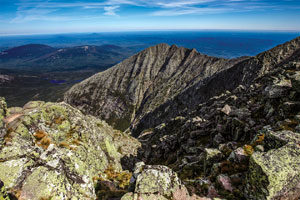Summerguide 2017 | view this story as a .pdf
From Staff & Wire Reports
 The Ice Age ensured that everyone living in the State of Maine today is “From Away.” We are all exiles from a prior existence, dreamers, immigrants. So any accurate description of Authentic Maine has to begin with, “No One is From Away.” Or “Everyone is From Away.” Your pick. Being a native used to come with bragging rights, but that was before we’ve come to understand we’re all descended from, on a timeless level, migrant tribes. No one has anything to prove here.
The Ice Age ensured that everyone living in the State of Maine today is “From Away.” We are all exiles from a prior existence, dreamers, immigrants. So any accurate description of Authentic Maine has to begin with, “No One is From Away.” Or “Everyone is From Away.” Your pick. Being a native used to come with bragging rights, but that was before we’ve come to understand we’re all descended from, on a timeless level, migrant tribes. No one has anything to prove here.
We’re all looking for something; we’ve all arrived. We’re home if we say so.
Smarting from being called a “year-round summer person,” I once proclaimed, “I’m a Mainer, born right here in Portland, in the same hospital as Stephen King–the Maine Eye & Ear
Infirmary.” The skeptic narrowed his eyes and asked: “Really? What floor?”
Eureka! We shared a smile.
Bowdoin at 100
Maine’s pioneering Arctic explorer kickstarted crowd funding before it was cool.
Kickstarting was first conducted on April 28, 2009, according to Wikipedia. But the Schooner Bowdoin was created through crowd funding that began in 1918. Responding to a slick marketing illustration that showed what the arctic schooner might look like amid the icebergs once she was launched, three hundred fifty benefactors each paid $100 to drum up the $35,000 needed to construct this legendary vessel.
If only one of these original marketing “brochures” still existed. Since this is the Authentic Maine issue, we’ve taken the trouble to discover what may be the last of the brochures from a private collection. Signed by Admiral Donald B. MacMillan himself, the back of the heavy cardboard reads:
Auxiliary Arctic Schooner Bowdoin
To be built for the MacMillan Arctic Association at East Boothbay, Maine, in May-July, 1920.
(Signed) D. B. MacMillan
Rescued from neglect, Bowdoin is now the pride of Maine Maritime Academy.
Bowdoin was declared the official sailing vessel of the state of Maine in 1986. In 1989 Bowdoin was designated a National Historic Landmark in recognition for her significant role in Arctic exploration.K
Spirit of the Mountain
There’s an ancient magic in Maine’s highest mountain.
Modern Myths
Whether or not they’ve heard the song “Climb Ev’ry Mountain,” some Penobscot natives are shy about climbing to the top of Mount Katahdin.
That’s because it’s holy ground.
Is it Wuchhosen, the wind bird, who lives up there, flapping his wings to create great storms? Or is it the Spirit of Katahdin, jealous of his solitude. Or is it the dominion of Gluskap, creator of the Earth? Whatever your choice of spirits, the aspect of the supernatural is strong.
In a piece for Sierra Magazine, Jason Mark points to Robert Moor’s book On Trails for an elevated example of the sublime as well as the tension that existed between Penobscot guides and the rusticating explorers who employed them. “In 1846, Henry David Thoreau made a failed bid to climb Mount Katahdin, the highest peak in the state of Maine. He and two companions made their way to its base by canoe, guided by an old Indian man named Louis Neptune, who advised Thoreau to leave a bottle of rum on top of the mountain to appease the mountain spirit.”
Thoreau and his party “got lost in the fog and never made it to the summit,” according to Moor.
Time has erased the trifling detail of who ended up with the the rum.
But Moor notes that while descening, alarmed by the savage majesty of the mountain’s hunched shoulders around him, Thoreau experienced a 150-proof insight. Sierra Magazine calls it a “meltdown”:
“This was that Earth of which we have heard, made out of Chaos and Old Night. Here was no man’s garden, but the unhandselled globe. It was not lawn, nor pasture, nor mead, nor woodland, nor lea, nor arable, nor wasteland…Man was not to be associated with it. It was Matter, vast, terrific…rocks, trees, wind on our cheeks! the solid earth! the actual world! the common sense! Contact! Contact!”
Ancient Connections
Barry Dana grew up on the Penobscot River and currently works to teach Wabanaki culture to native youth to preserve the traditions of his people. We talk to the tribal leader about the spiritual significance of the mountain for the Penobscots.
What was your first impression of Katahdin, and why is the summit so spiritually signifiant to Penobscots?
I first visited Mt. Katahdin as a freshman in high school on a class trip. I was blown away with what I saw and have returned every year to maintain that connection. Why would I agree to give, convey, or teach about that which is sacred to me and my people, the Wabanaki? Because if I don’t, it will be even more likely that people will continue to disrespect the mountain. When I say mountain, it’s not just the top but the entire area that makes up the mountain, from the top down to as far down as the blueberry ledges, including all the designated campgrounds.
What are your personal feelings about the top of Katahdin? Have you ever been there?
Yes, I’ve been to the top of Katahdin. I’ve climbed it in search of enlightenment, guided by my intuition. Indigenous cultures all over the globe look to the mountains for spiritual insight. Too many explorers and climbers confuse this inner voice of mountaintop connection with a need to “conquer” the mountain. I think this to be unfortunate because, should they not reach the peak, they feel as though they have failed. Too much ego robs one of spiritual happiness.
In 1846, Louis Neptune advised Thoreau to bring a bottle of rum to place for the spirit at the top of the mountain. Why?
We’ll never truly know why Louis Neptune told Thoreau what he did, but I see it as a word of caution. And a bottle of alcohol as an offering? I have no idea! That makes no sense and is definitely not in keeping with true native religious thinking. But Penobscots are really good at playing tricks and pulling your leg…
Can you tell me if it’s true that many members of the Penobscot Tribe refuse to climb to the very top of Katahdin?
Why do we natives say not to go there? Think about who we say it to: white people who need to conquer a sacred place. That does not lead to good karma. For my tribe, we see Katahdin as the place of our birth, where life began. It can’t get any more special than that. We still live within its shadow and honor our birth by returning to the mountain. We go to the top if need be for spiritual enlightenment and ceremony, some simply for the pleasure that comes from looking out across so many hundreds of miles. It’s medicine for the soul. But we recognize that it is a mountain with an angry mood at times. It has its own weather–storms that can pop up without warning. The old stories about not going to the top of Katahdin were more of a caution. Be mindful of why you feel the need to be there. Keep an eye on the weather.
What exact place in Maine is most authentic to you, and why? If there’s such a thing as a cradle of authenticity in Maine, where and what would that be?
I do not view Katahdin as part of Baxter State Park, nor do I view my homeland as “Maine.” So when asked, I can’t say what or where is “authentic.” Maine is not a place unto itself. This area that includes the ocean, rivers, lakes, and mountains is all one living ecosystem dependant upon the whole in order to thrive. It’s one living organism. We call it Wabanakigok: Land of the Rising Sun.






0 Comments